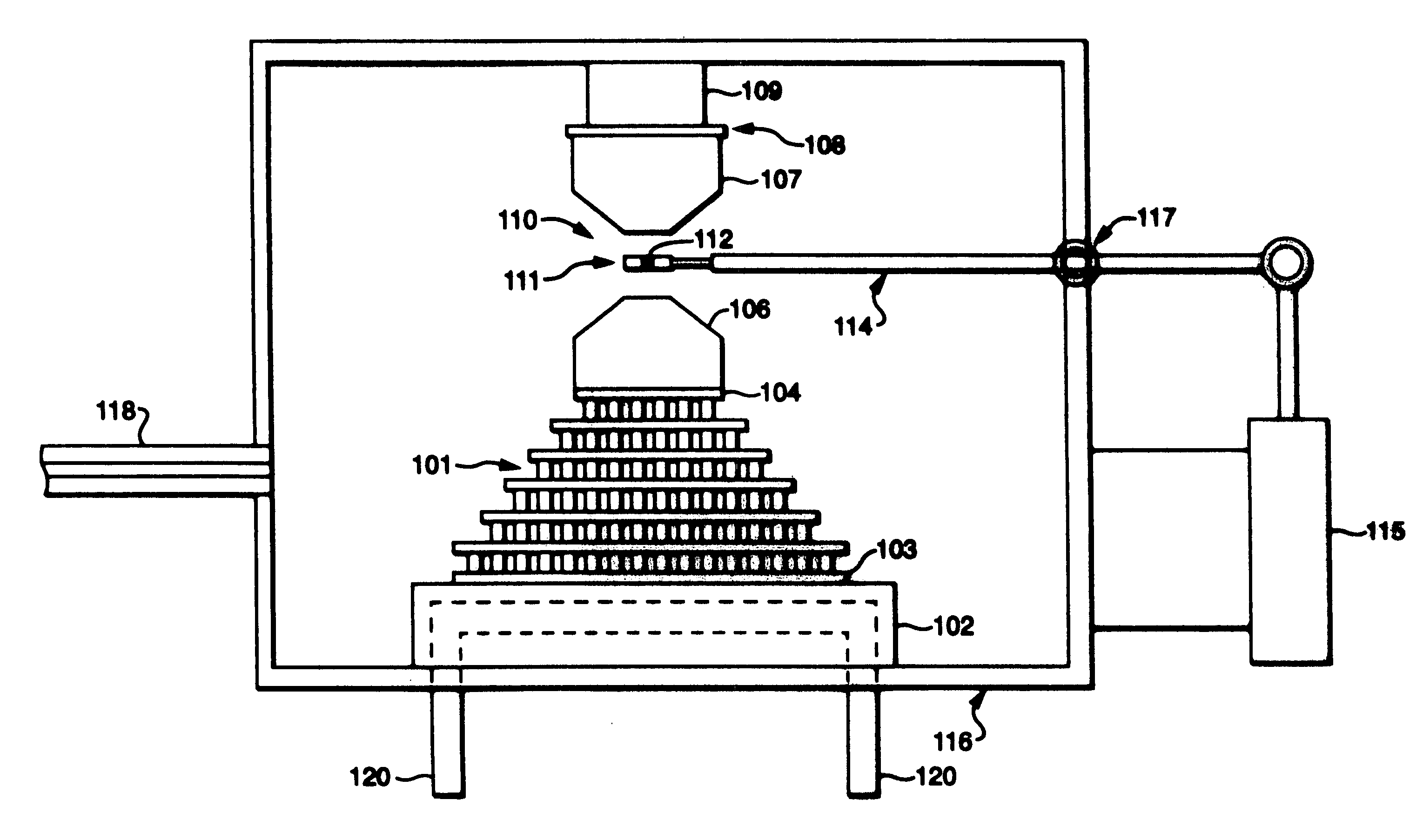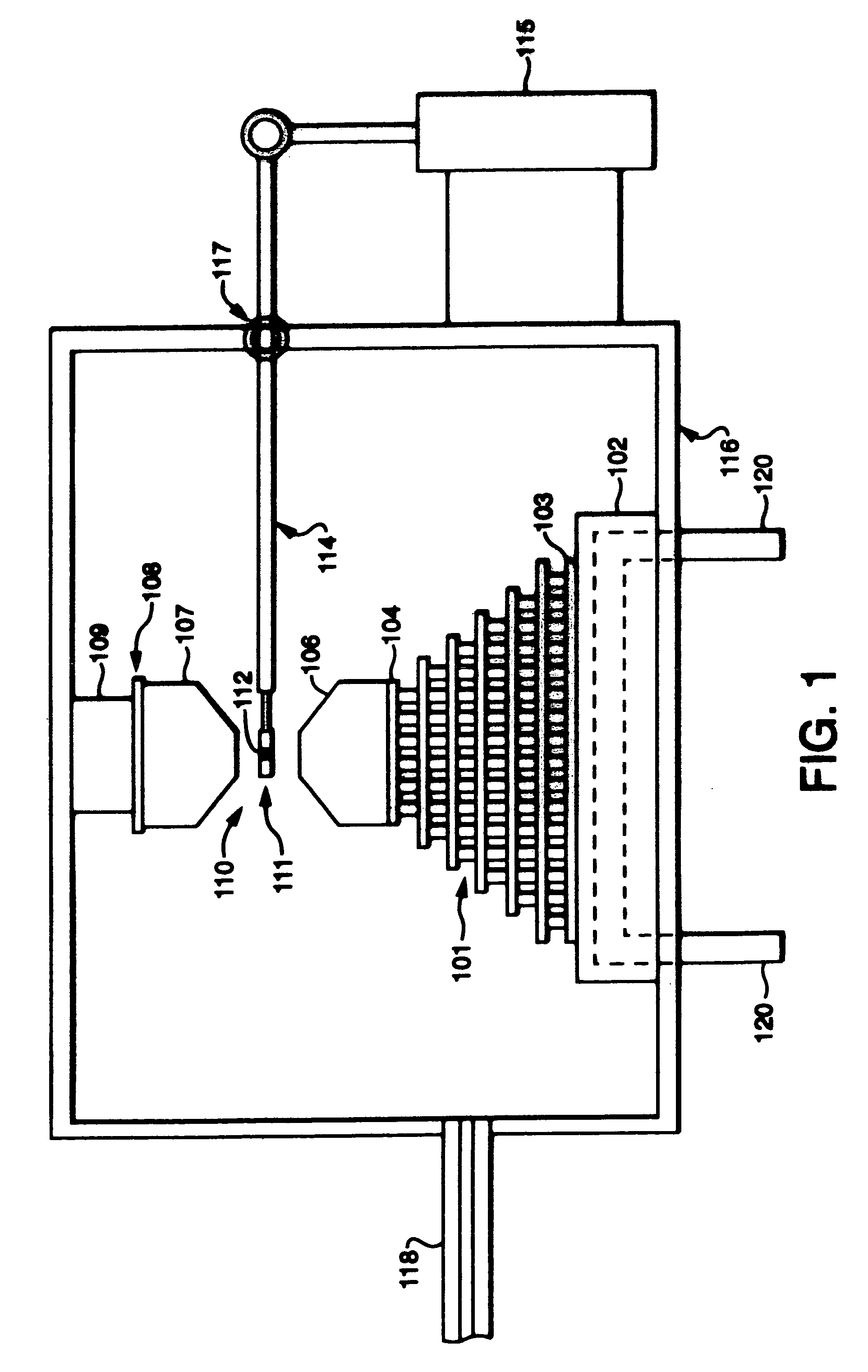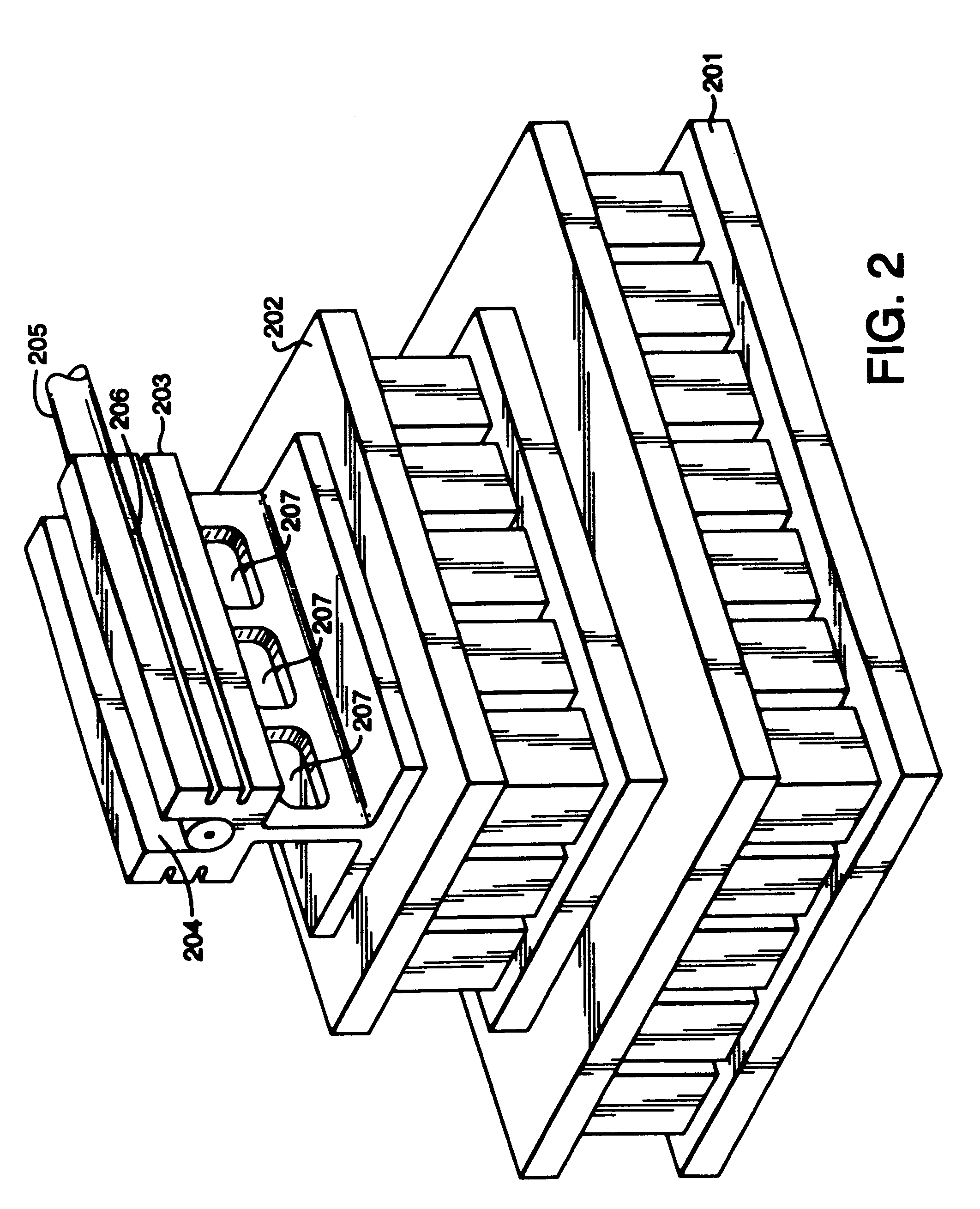Peltier based freeze-thaw valves and method of use
a technology of freeze-thaw valves and peltiers, which is applied in the direction of lighting and heating apparatus, laboratory glassware, instruments, etc., can solve the problems of traditional valve technology configuration, reduced channel size and volume, and difficulty in managing the flow of liquids within small diameter channels, so as to avoid repetitive cyclic thermal stresses, reduce the effect of reducing the number of valves and reducing the size of the channels
- Summary
- Abstract
- Description
- Claims
- Application Information
AI Technical Summary
Benefits of technology
Problems solved by technology
Method used
Image
Examples
Embodiment Construction
[0019]Turning to FIG. 1, an illustrative freeze-thaw valve according to the invention is shown. This illustrative freeze-thaw valve is cooled by a Peltier stack 101 having a hot face 103 and a cold face 104. The hot face 103 of the Peltier stack 101 is mounted to a heat exchange surface 102. The heat exchange surface 102 is comprised of a cross-drilled copper water jacket or manifold. This heat exchange surface 102 allows heat to be removed from the hot face 103 of the Peltier stack 101 that results from both the useful heat pumping and power dissipation within the electrical drive elements within the Peltier stack 101. The water jacket contained within the heat exchange surface 102 is typically one component of a liquid circulation path having a small radiator and circulation pump. The circulation path connects to the water jacket at coolant ports 120. The cold face 104 of the Peltier stack 101 is affixed to a cooled thermal mass 106. The cooled thermal mass 106 is configured from ...
PUM
| Property | Measurement | Unit |
|---|---|---|
| temperature | aaaaa | aaaaa |
| temperatures | aaaaa | aaaaa |
| temperatures | aaaaa | aaaaa |
Abstract
Description
Claims
Application Information
 Login to View More
Login to View More - R&D
- Intellectual Property
- Life Sciences
- Materials
- Tech Scout
- Unparalleled Data Quality
- Higher Quality Content
- 60% Fewer Hallucinations
Browse by: Latest US Patents, China's latest patents, Technical Efficacy Thesaurus, Application Domain, Technology Topic, Popular Technical Reports.
© 2025 PatSnap. All rights reserved.Legal|Privacy policy|Modern Slavery Act Transparency Statement|Sitemap|About US| Contact US: help@patsnap.com



